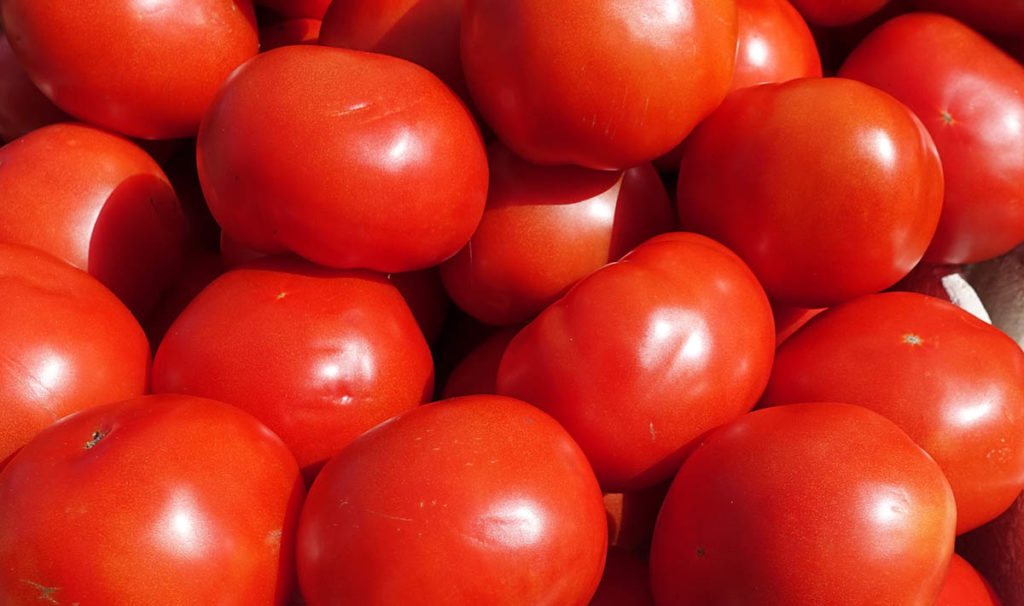By Frank Giles
Michael Schadler, executive vice president of the Florida Tomato Exchange, discusses how the season has progressed and ongoing trade issues with Mexico.

How has the tomato season gone thus far for Florida growers?
Schadler: The start of the season was tremendously challenging for much of the industry due to Hurricane Ian. The fall crop in parts of Central and South Florida was significantly damaged. But by mid-December, crops that had been planted after the hurricane began to bear fruit.
The winter crop was a good one with mostly favorable weather in South Florida. The spring crop, so far, has been excellent with good yields and good quality.
Market prices were, of course, very high in the fall due to the hurricane-induced shortage. Prices quickly moderated once volume normalized through the heart of the winter. From late March though the first couple weeks of April, prices fell sharply, which caused some pain for growers.
The second half of April has been better, as warmer weather throughout the country increased demand, and as the seasonal Mexican surge of imports from Sinaloa has started to wane.
Are there any updates on attempts to remedy problems with the suspension agreement with Mexico on tomato imports?

Schadler: Despite the good faith efforts of the U.S. Department of Commerce (DOC) over the last four years, the 2019 suspension agreement has not been able to close the loopholes that have always been a problem. It’s become clear that these agreements are simply not enforceable, at least when it comes to the tomato trade with Mexico. Suspension agreements might be an effective tool for products that can be kept in storage until market conditions improve, but for highly perishable items like fresh tomatoes, there is just too much incentive to evade the reference prices when markets are oversupplied. In June, the Florida Tomato Exchange filed a request with the DOC to terminate the 2019 tomato suspension agreement because it has failed to stop unfairly traded Mexican tomatoes from destroying the U.S. tomato industry.
Besides the suspension agreement, are there any other efforts to provide growers with trade protection during the Florida market window?
Schadler: There are broader efforts to find solutions for seasonal fruit and vegetable growers affected by unfair trade. The Florida Tomato Exchange is supportive of these efforts, which involve many different Florida commodities. But the tomato suspension agreement remains our primary focus.
Are other tomato-producing states facing similar foreign import market pressures, and are those states supporting efforts to enforce better trade protections?
Schadler: Yes, Mexico is a year-round producer of tomatoes, so American tomato growers in all states compete with Mexican tomatoes. California producers, for example, face tremendous pressure from Mexican tomato imports during their summer season. Canada also remains a very large exporter to the United States of greenhouse tomatoes, which compete with domestic-grown tomatoes.
Are you seeing Florida tomato growers diversifying their operations and services to spread risk and generate new revenue streams?
Schadler: Most tomato growers in Florida are dedicated primarily, if not exclusively, to tomatoes. Some grow other crops, but in most cases, tomatoes are their primary endeavor. Many growers in Florida have left the industry over the years due to the challenge of competing with Mexican imports, but the remaining growers are dedicated to the industry.
We hear a lot about the adoption of new technologies to help growers become more efficient and viable in today’s environment. How is technology adoption playing a part in the tomato industry?
Schadler: If you look back at the last 25 years, there has been significant investment in new varieties, growing methodologies and packing efficiencies. This is the only way one can survive in this industry, by improving yields, cost efficiencies and ensuring excellent product quality.
Even when there have been production setbacks like the loss of methyl bromide use, the industry’s innovation has been able to overcome such losses. With that said, it’s getting harder to squeeze out enough efficiencies, let alone price increases to our product, in the face of the input and wage inflation of the last couple of years. It’s a challenging time on that front.
We’re excited, however, about the strong relationship we have with researchers at the University of Florida Institute of Food and Agricultural Sciences to see how advances in automation and artificial intelligence might help us bridge the wage disadvantage we have in relation to our competitors in Mexico.
What are some opportunities for Florida and U.S. tomato growers?
Schadler: Florida and U.S. growers have lost significant market share to imports over the last decades, which means there’s opportunity to claw back some of that market in the years ahead. This could, in turn, help reverse the decline in Florida’s tomato acreage. That growth could be spurred by technological advances that help growers compete on a level playing field with imports. And it could be improved with more effective policy from the U.S. government to mitigate unfair trade practices.
The competitive landscape in the tomato industry, as well as changing consumer preferences, is likely to spur innovation in the types of tomatoes grown in Florida, how they are packaged and how they are marketed. All of these are opportunities that the industry will take on in the coming years.









